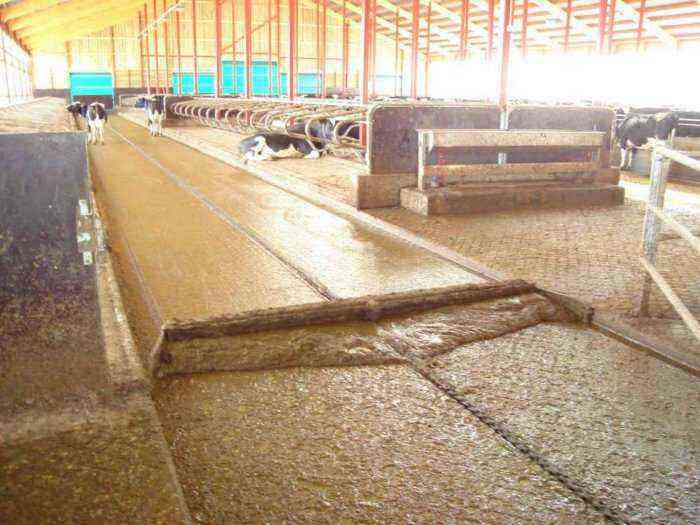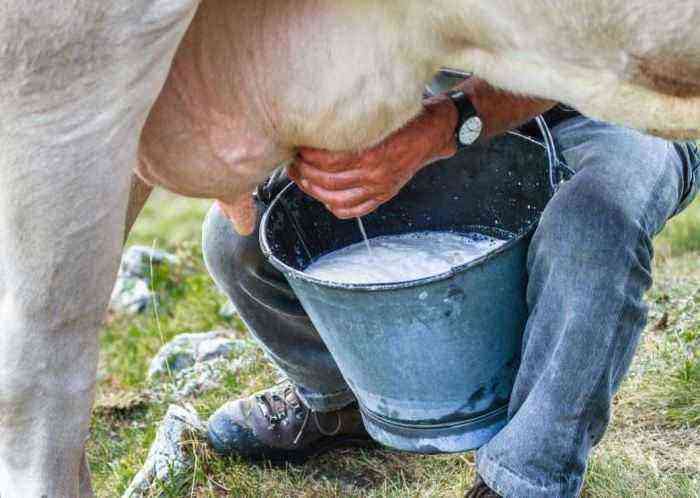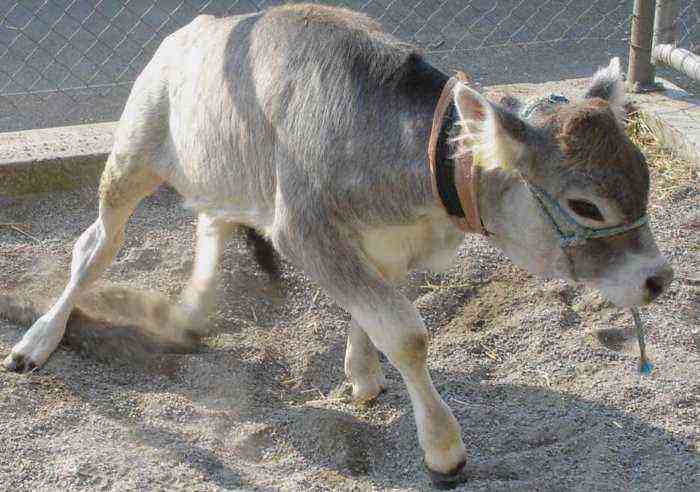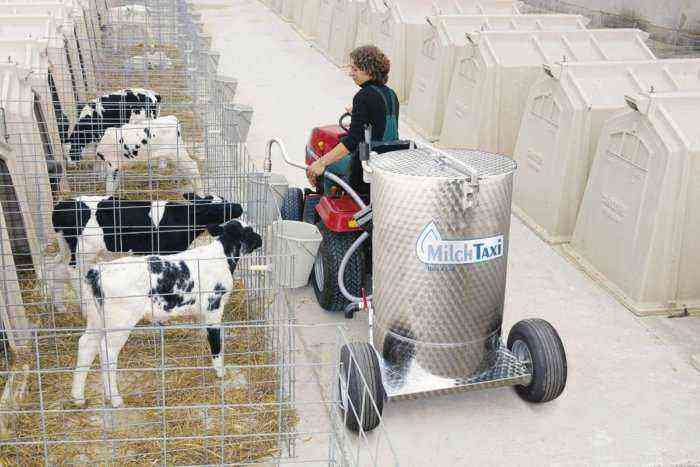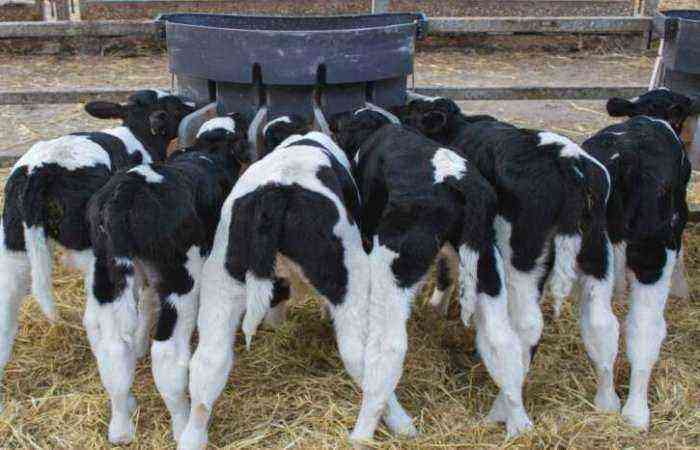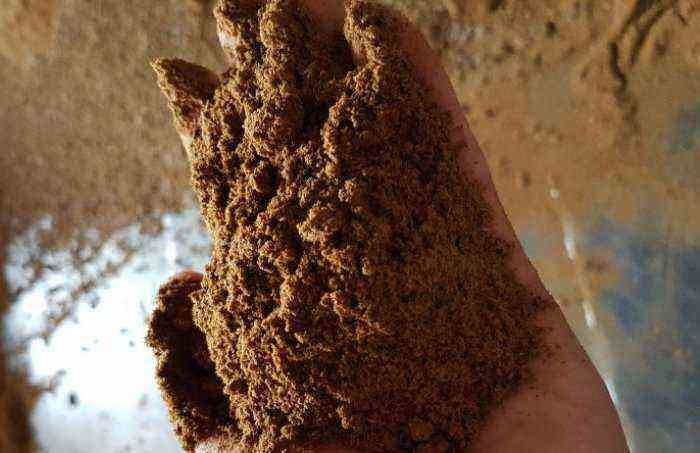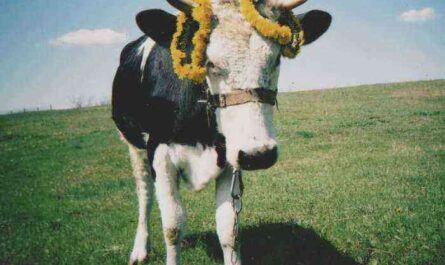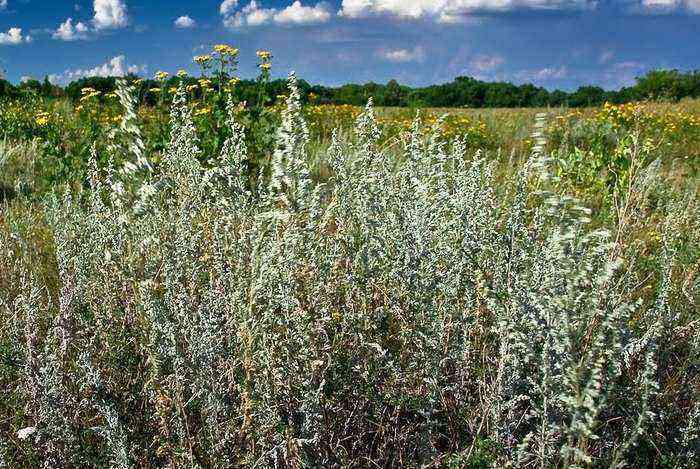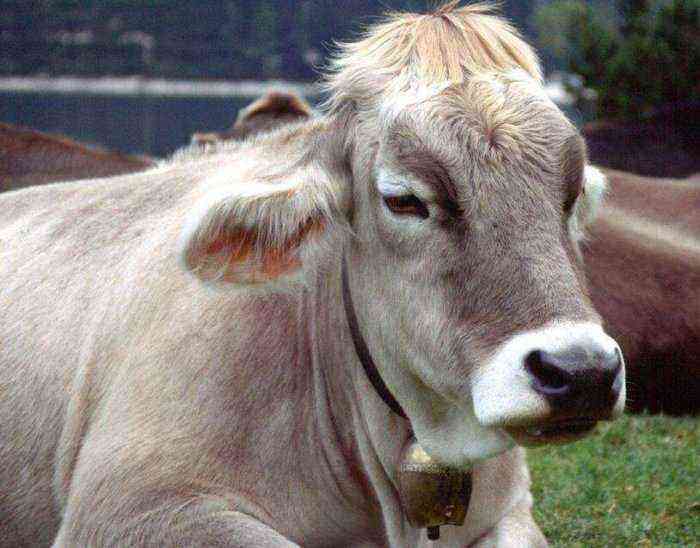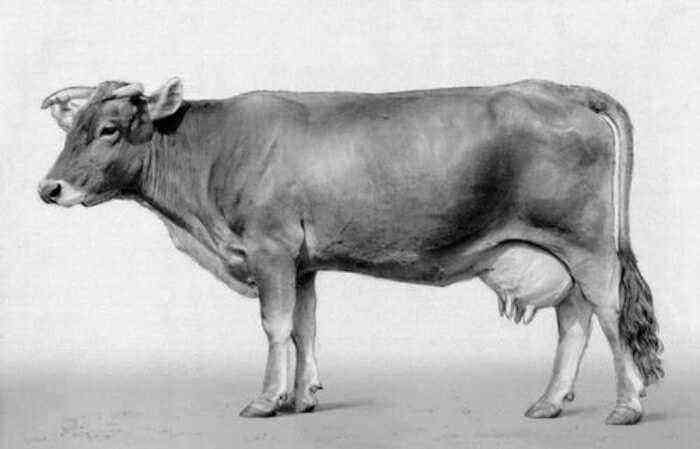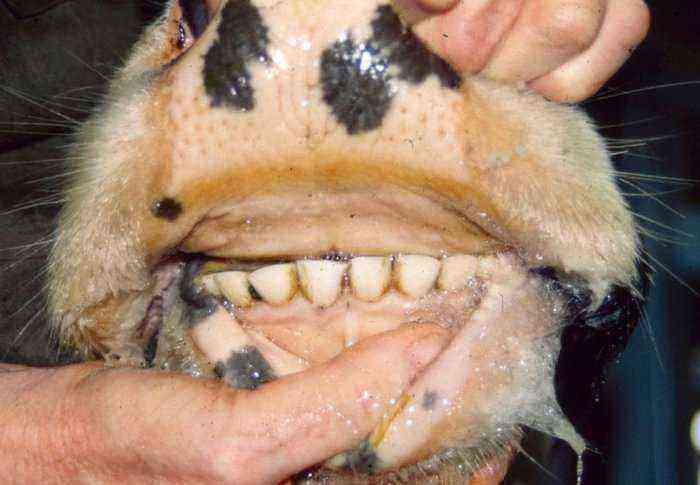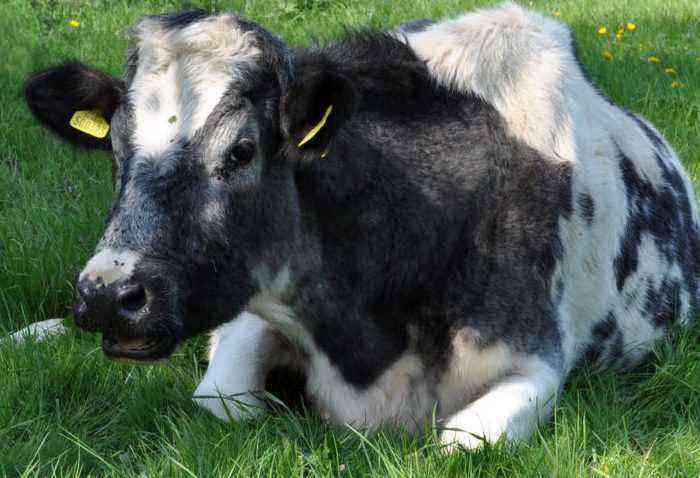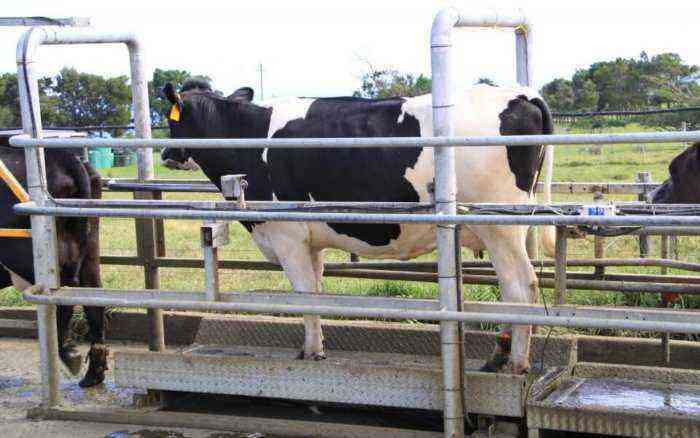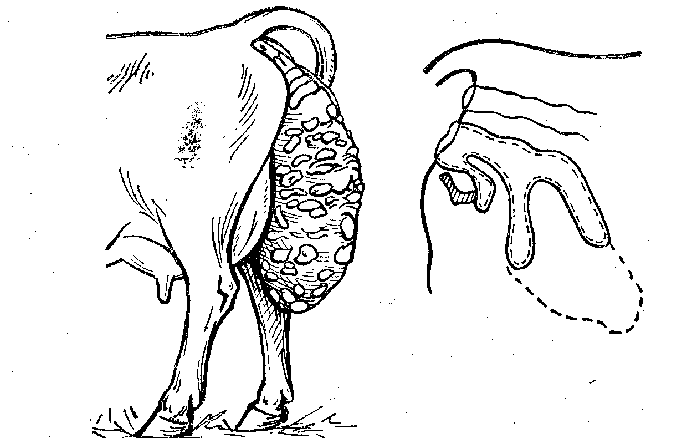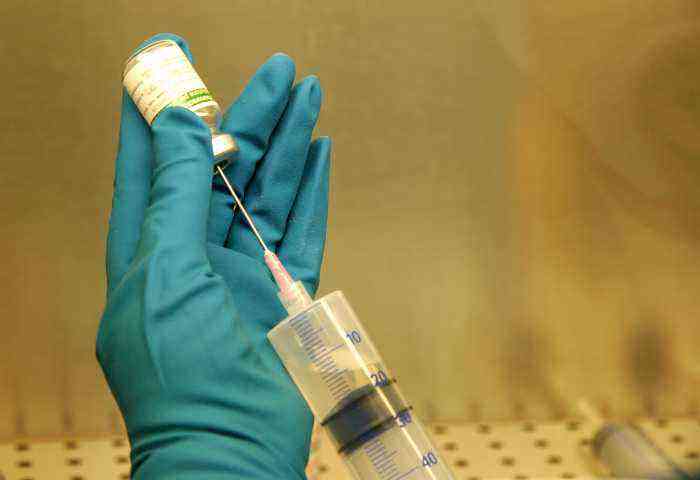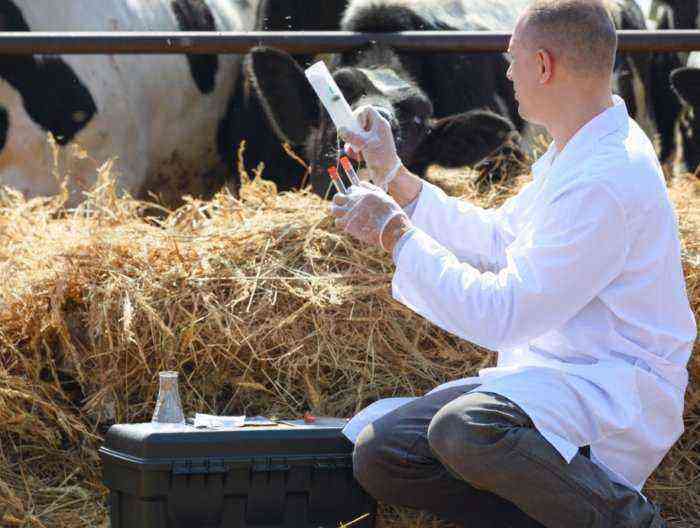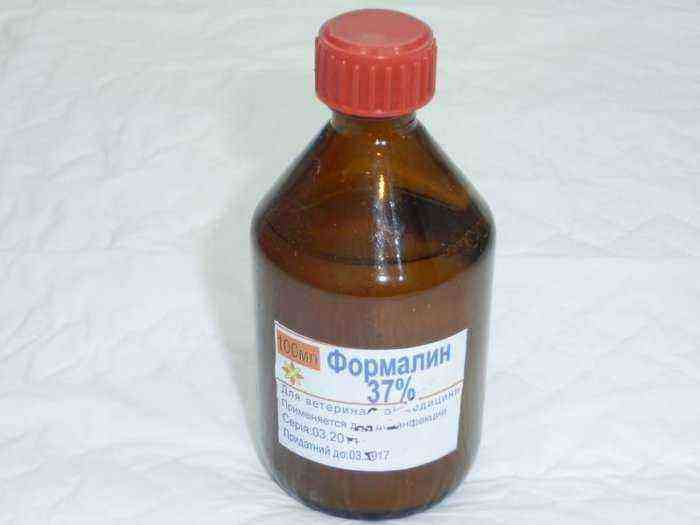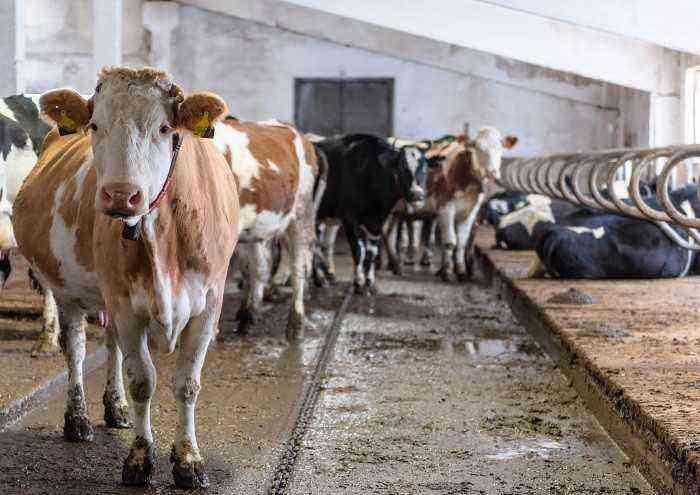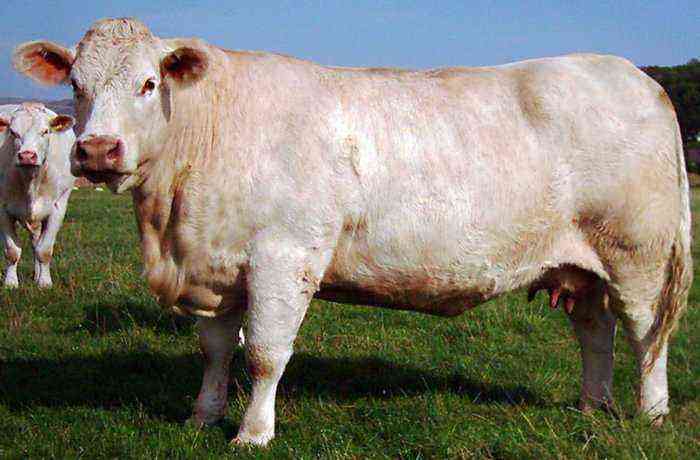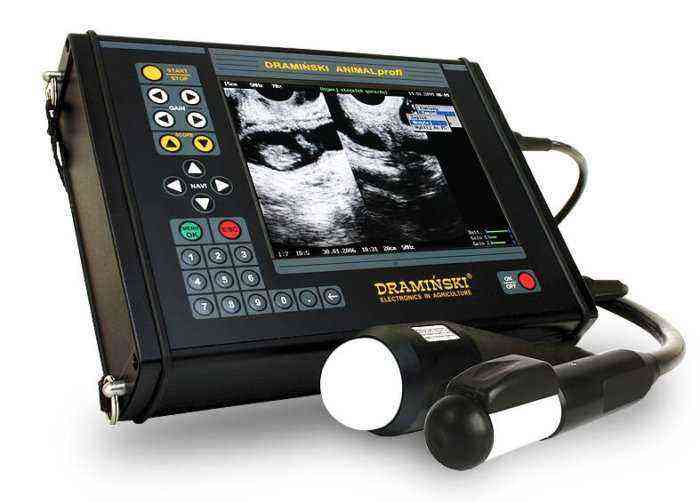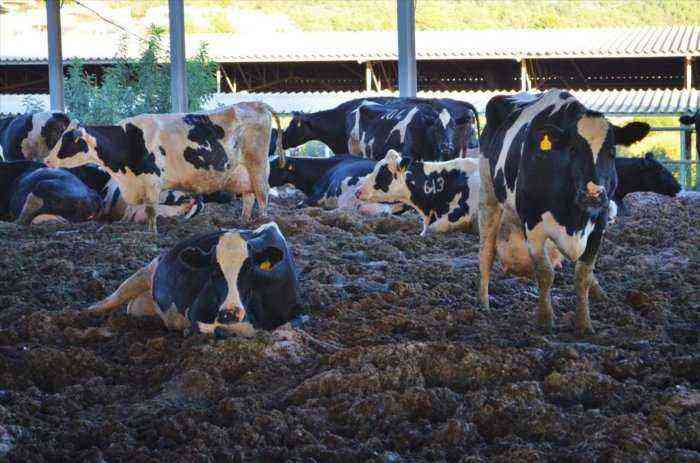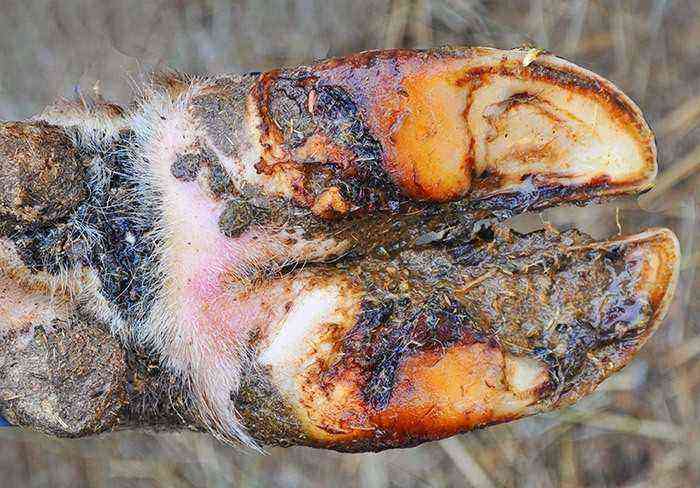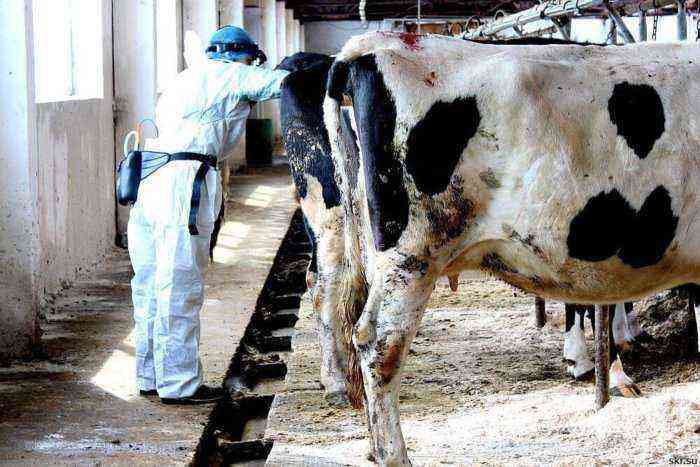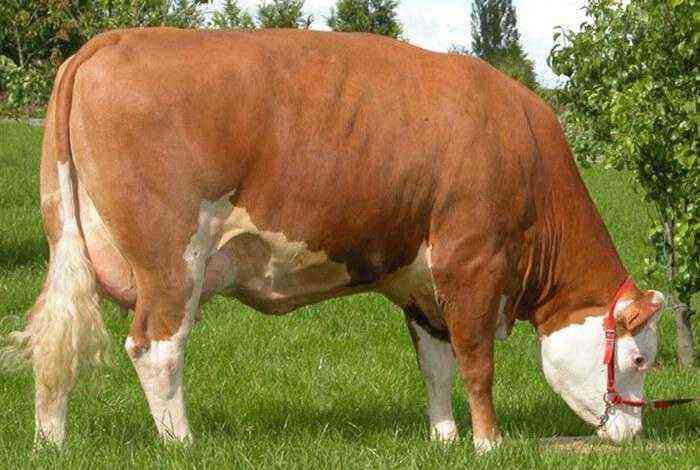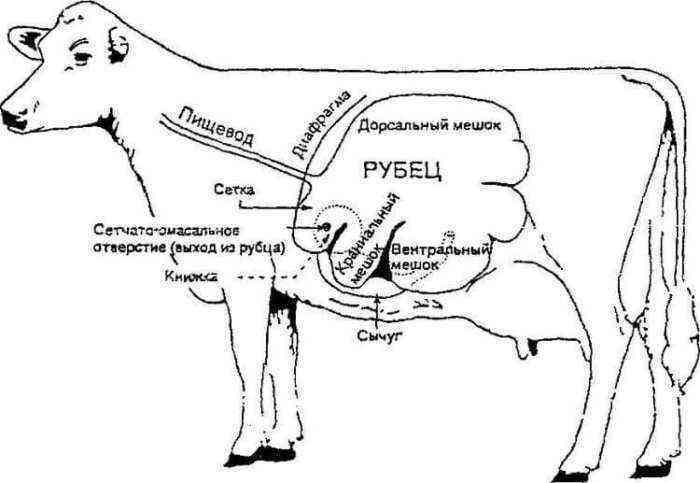An abscess in a cow is a limited formation with purulent contents inside, which occurs on the body under the skin, most often due to damage to its integrity. An abscess not only causes pain to the animal, but is also extremely dangerous to health and life. If the abscess bursts inside the body, it is fraught with blood poisoning.
sick calf
Symptoms
While the abscess is just forming, it is difficult to notice, since the cow’s condition is normal, the animal does not show anxiety, eats well. When the bump increases, the focus of inflammation becomes painful and hot. At this stage, the symptoms of an abscess in cows are as follows:
- Loss of appetite.
- Oppression. The cow has weakness and apathy due to intoxication of the body.
- Anxiety.
- Rounded seal under the skin – on the neck, udder, back, abdomen, limb or croup.
- To the touch, the abscess is hot, dense, painful.
Recommendation. Having noticed the symptoms of an abscess in a cow, you should not postpone its treatment. You need to invite a veterinarian as soon as possible to open the abscess.
Causes
In most cases, abscesses occur due to mechanical damage to the skin. A puncture of the skin with a sharp object during grazing or a scratch is a gateway for infection. Pathogenic bacteria are always present on the body of cows. These include:
- staphylococcus;
- Pseudomonas aeruginosa;
- E. coli;
- streptococci;
- some types of mushrooms.
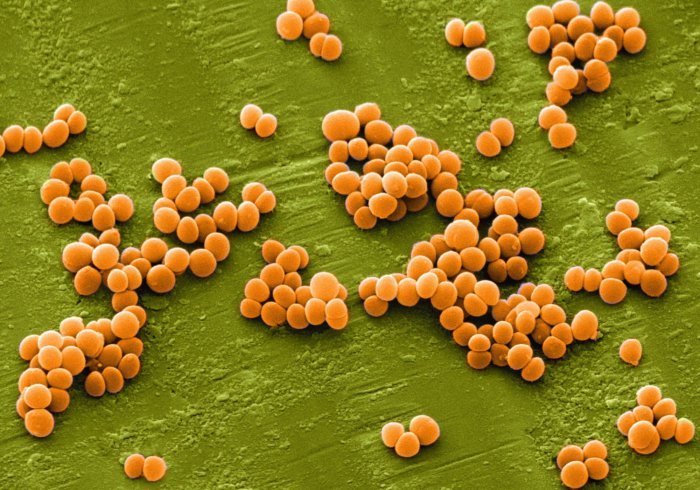
Staphylococci
Penetrating into the wound, foreign microorganisms are attacked by leukocytes. If the animal’s immunity is strong, the protective cells will destroy the harmful bacteria, an abscess will not occur. In immunocompromised cows, the fight between leukocytes and pathogens can go on for a long time. As a result of such opposition, pus is formed – this is nothing more than dead bacteria and leukocytes. At the same time, the site of damage on the skin is tightened, preventing the contents from escaping to the outside. This is how an abscess is formed – a limited capsule with pus inside.
Attention! An abscess can reach a huge size, and the amount of pus inside is sometimes several liters!
Another reason for the appearance of an abscess is a purulent process in another part of the animal’s body. For example, if a cow has foot rot or endometriosis, pathogenic microorganisms are carried through the bloodstream throughout the body. As a result, an abscess may appear in any part of it. It is very dangerous, because its contents may not spill out onto the surface of the skin, but into the body if the capsule that contains the pus overflows. In this case, the risk of developing phlegmon and sepsis is high.
Treatment
A sick cow should be placed in a warm and dry place, special attention should be paid to the cleanliness of the room where the animal is kept. An abscess in cows, like in other animals, is treated surgically. The contents of the capsule must be released outside to prevent blood poisoning. The procedure can be performed by a veterinarian, but if desired, the farmer himself is able to help the cow. For this you will need:
- alcohol;
- scalpel;
- clean gauze or napkins;
- a large amount of cotton;
- a container for collecting pus;
- spray antiseptic;
- Levomecol ointment.
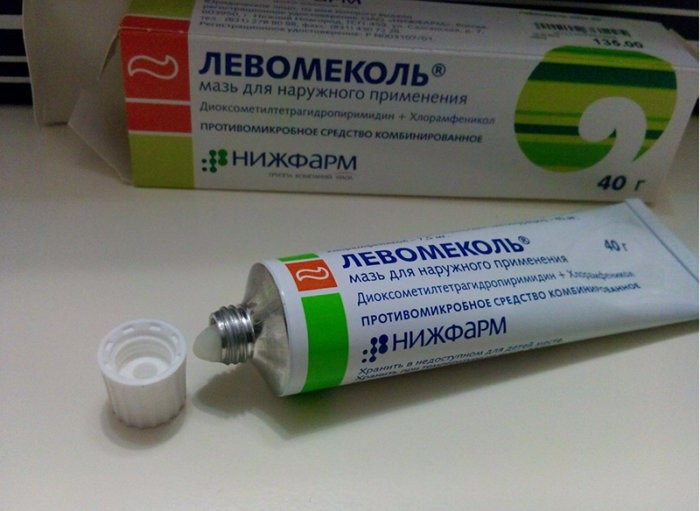
Levomecol ointment
Before carrying out the procedure, you need to wash your hands, treat them with an antiseptic, put on sterile gloves. It is advisable to introduce a solution with novocaine into the area on the border of the abscess and healthy tissue so that the cow does not feel pain. The intervention site is carefully treated with an antiseptic.
With a precise movement with a scalpel, an abscess is opened at its highest point. From the inside, pus will immediately begin to stand out. It is collected in a container – a bucket or a sudok, so as not to spread the infection indoors. When the contents of the capsule are completely released, the pocket should be treated with an antiseptic. It is important to remove all pus from the cavity, carefully processing all the folds. You can wash it out of the aspirator with furatsilin.
The next stage is treatment with Levomekol ointment. It is abundantly lubricated with the cavity from which the pus came out, as well as the place of dissection. In the future, the site of intervention is treated as an open wound.
Attention! It is important to monitor the condition of the wound daily, if necessary, wash it inside so that pus does not accumulate there again. A sterile breathable bandage is applied to the incision site. It should be changed daily.
Medication
With extensive or multiple abscesses, the cow will be prescribed broad-spectrum antibiotics – Oxytetracycline, Bicillin. This is especially true if it has developed due to other diseases – mastitis, endometriosis or foot rot.
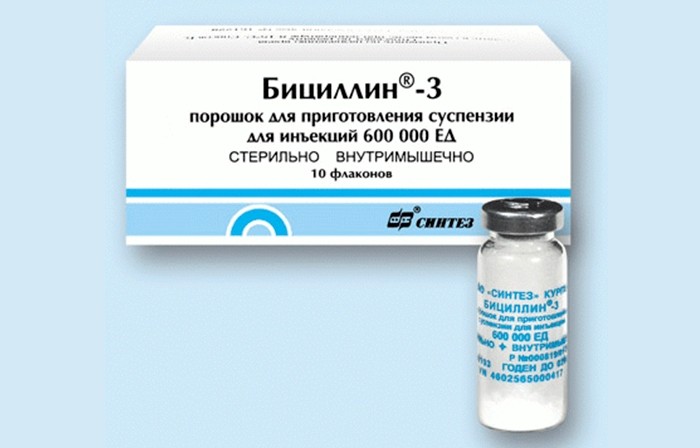
Bicillin
Since the appearance of abscesses is typical for individuals with a low immune status, it is recommended that a sick cow improve its diet and undergo a course of vitamin treatment.
Prevention
Abscesses are most common in immunocompromised individuals. There is a high risk of their occurrence in animals that have suffered severe infectious diseases, as well as in those whose diet is poor and the conditions of detention are poor. To reduce the likelihood of abscess formation in cows, it is necessary to improve their conditions, diversify the diet, introduce vitamins and mineral supplements into it.
It is important to monitor the health of cows – to prevent the development of purulent mastitis, endometriosis and other diseases that can provoke the appearance of abscesses. Regular inspection of animals after grazing and timely treatment of skin lesions will help prevent the formation of purulent foci of inflammation.
An abscess can take the life of an animal if the farmer does not help him, because the capsule, which is filled with pus, can burst at any moment. As a result, the contents will spill into the adjacent tissues, which will lead to the development of phlegmon, and then blood poisoning. That’s why it’s important not to start treating an abscess.


